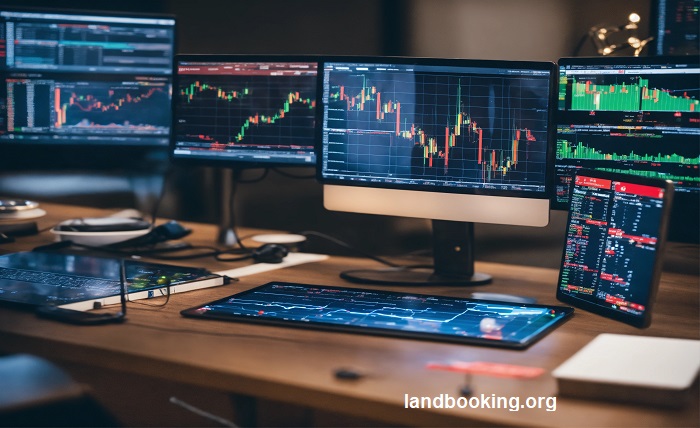What Are the Essentials of Intraday Trading for Beginners?

Within intraday trading, which is known also as day trading one buys one’s stocks, bonds, and other securities and sells them at once on the trading day. It calls for a substantial insight into market trendiness, technical analysis, and risk-taking. Both beginners and experts will be inspired to trade in the intraday market because of the attractiveness and difficulty of this kind of trading. Let’s focus on the fundamentals of intraday trading for beginners, addressing notions about key items, strategies, and money management approaches.
Understanding Intraday Trading
In the realm of intraday trading, a deviation from the traditional means of investing is a principle that focuses on exploiting momentary fluctuations instead of taking a broader view of markets. Trading is usually centered around liquid assets which include stock, currency, and commodities, as all goods can be sold and purchased quickly. Thus, traders pay attention to minute price changes during a business day.
Key Concepts for Beginners
Before diving into intraday trading, beginners must grasp several fundamental concepts: Before diving into intraday trading, beginners must grasp several fundamental concepts:
Market Basics:
Getting to know how the market operates is very necessary. This includes different order types, trading hours, and players in the market.
Risk Management:
The crystal clear management of risk has a paramount importance while day trading. The beginners need to set the stop-loss orders suitably to prevent devastating losses and avoid the temptation of excessively leveraging the positions.
Developing a Trading Strategy
Formulating a strong in-day trading strategy is key to success in the in-day trading sector. Novices are advised to create a strategy that plays harmoniously with their risk attitude, trading style, and financial objectives for success. Some common intraday trading strategies include: Some common intraday trading strategies include:
Creating Certain Trading Objectives and Goals.
The first step to a well-equipped strategy is to state your financial goals and they should be achievable and clear. Traders ought to figure out what they want to attain from trading whether it’s additional income, over the long-term growth of capital, or a long-term protection from volatility. Settling clear, measurable, and achievable purposes will help traders to stay without distraction and inspiration.
Choosing a Trading Style
Important to emphasize, that there are disparate trading styles to select from, all of which possess their features and benefits. People often carry out trades successfully whether it’s short-term trading, swing trading, or position trading. Traders should choose a trading style that will enable them to express themselves freely, and should only use strategies that are consistent with their level of risk and the time they are available. They cannot overlook the fact that the will of a certain trading strategy differs from another and that various strategies may demand different approaches to strategy development and execution.
Risk Management Techniques
Calculating Position Size
Traders should decide how many shares they can carry on a given trade by considering things like the size of their account, the percentage of their capital they are willing to invest on each trade (risk per trade), and the distance from entry to stop-loss (risk distance). Multiple position sizing formulae exist; you can apply a fixed percent risk model, volatility-based model, the money dome, etc. positions.
Stop-Loss Orders
Set-loss orders are simple and easy for risk management which helps a trader to avoid innumerable losses on each particular trade. A stop-loss order is an order when the price specified by the trader will trigger an automatic trade exit in case the market makes moves against the trader’s position.
Setting Stop-Loss Levels
While opting for stop-loss, traders ought to keep an eye on support and resistance levels, alongside the volatility for the last day or so in prices, and the larger market environment. Stop loss targets should be positioned at fundamental points to ensure that a trade is considered risky and according to the trader’s risk tolerance and trading strategy.
Adhering to Stop-Loss Levels
Abiding strictly by-the-stop-loss levels are essential for effective risk management. Investors must train themselves to not violate the stop-loss rules and leave to the market events they do not have control over, rather than allowing emotions to make them deviate from the plan.
Diversification
Diversification, in turn, involves investing in various assets/communications so that the losses related to a single position would not have a big impact on the whole portfolio. With the help of tools like diversification, traders can reduce a big risk of losing significant amounts of funds due to unfavorable shifts in a market or a particular asset class.
Asset Diversification
Traders are no longer confined to one financial instrument and can diversify and balance their portfolios by stock trading advice not only stocks but also currencies, commodities, and indices. Diversifying across various asset classes gives the traders the ability to manage the risks in market exposure and to seize the opening meanwhile in all the markets.
Trade Diversification
There are multiple trades performed accepting or hedging different assets or trading avenues. Diversification of their trades will assist traders in the reduction of their risk and will give an opportunity to favorably sum up the profits despite some individual trades being in loss.
Risk-Reward Ratio
The risk-reward ratio is a central parameter to estimate if the possible earnings from the stake are worth considering the level of risk attached to the trade. By risk-reward ratio assessment before entering a trade, traders can estimate if the expected reward is meaningful considering the risk.
Calculating Risk-Reward Ratio
The dealers strike the balance between risk and profit by using the formula of potential reward-to-risk ratio i.e. distance from entry to target divided by the distance from entry to stop loss. A good risk-to-reward figure particularly recommends a trade that is capable of obtaining a relatively greater amount of profit as compared to the amount of risk it takes.
Conclusion
Intraday trading helps in quick run-making opportunities for traders willing to earn money from the short-term price variations in the financial markets. At the initial stage, getting to know the fundamentals of day trading, building up a reliable trading strategy, and implementing strict risk protection measures are important steps that will contribute to victory. Interspersed with learning techniques, practice sessions, and self-improvement, beginners can surmount the barriers to intraday trading skillfully and courageously.




